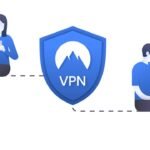In this article we are going to understand Phishing Attack In Depth :
Many People are cheated online by Hackers Remember these important point before reading full article :
1. Do not click on any Unknown Link which you get as a message.
2.It looks like a facebook page or gmail login page , but it can be a fake website’s login page so always check website url before entering user name and password.
Phishing Attack: A Sneaky Online Trap
Imagine you got a text message from your bank on mobile, saying that your account is locked. It asks you to click a link to fix it. This might seem real to you, but it’s actually a trick called phishing.
Phishing attacks are like online traps. Hackers pretend to be trusted companies or people to trick you into giving away your personal information, like passwords or credit card numbers. They might send fake emails, texts, or even phone calls , or they may create a fake website which looks like your online banking portal or Facebook and if you try to login in that fake website then your username and password will be collected by hacker.
How to Protect Yourself from Phishing Attack
- Be cautious of unexpected messages: If you get a message from a company you don’t expect, be suspicious.
- Don’t click on links or don’t download attachments from unknown senders.
- Check the website address carefully. Fake websites often have similar but slightly different web addresses.
- Use strong, unique passwords for each account.
- Keep your software and devices up-to-date.
By being aware of these tricks, you can protect yourself from falling victim to phishing attacks.
What is Phishing ?
Phishing is a type of cybercrime where attackers try to cheat any person by using fake website’s to get sensitive information, such as passwords, credit card numbers, or personal details. Attacker make fake website clone and send you link of fake website or they try to impersonate trusted entities—like banks, social media platforms, or even friends to deceive you. The goal is to steal your information for malicious purposes, such as identity theft or financial fraud.
How Phishing Works
Phishing often occurs through emails or messages that appear legitimate. Attackers create fake websites that closely mimic the real ones, making it difficult for you to tell the difference. When you click on a link in a phishing email and enter your information, it goes directly to the attackers instead of the legitimate company.
Real-World Examples of Phishing
1.The Fake Bank Email:
- Imagine you receive an email that looks like it’s from your bank. It might say, “Your account has been compromised! Click here to verify your identity.” The email could have your bank’s logo and use familiar language. If you click the link, it takes you to a fraudulent website that looks just like your bank’s official site. If you enter your login details, the attackers capture your information.
2.The Social Media Message:
- You might receive a direct message on social media from someone you know, claiming they found a funny video of you. They send you a link to watch it. However, this link leads to a phishing site designed to steal your login credentials or install harmful software on your device.
3.Tech Support Scam:
- You get a call from someone claiming to be from a tech support team, saying there’s a problem with your computer. They might ask you to download software to fix the issue, but this software could give them access to your computer and personal information. This is known as vishing (voice phishing).
Types of Phishing Attacks
Phishing Attack happen in various forms, each with its own methods and targets. Here are some common types:
1.Spear Phishing:
- This type targets specific individuals or organizations. For example, an employee might receive an email that appears to be from their boss, asking for sensitive company information. The attacker may research the company and its employees to craft a convincing email.
2.Whaling:
- Whaling is a form of spear phishing that specifically targets high-profile individuals, like CEOs or executives. An attacker might create an email that looks like it’s from a trusted partner or client, aiming to manipulate the executive into transferring money or sharing sensitive data.
3.Clone Phishing:
- In clone phishing, the attacker duplicates a legitimate email that you’ve received before, replacing links or attachments with malicious ones. For example, if you recently received a flight confirmation email, the attacker might send a similar email claiming there’s a problem with your booking, urging you to click a link that leads to a phishing site.
4.Pharming:
- Pharming redirects you from a legitimate website to a fake one without your knowledge. This can happen if your device is infected with malware that alters the website addresses you visit, or if attackers exploit vulnerabilities in the DNS (Domain Name System).
5.Smishing:
- Smishing is phishing done through SMS (text messages). You might receive a text claiming you’ve won a prize, asking you to click a link to claim it. The link could lead to a phishing site or download malware to your phone.
Recognizing Phishing Attempts
It’s essential to be able to identify phishing attempts to protect yourself. Here are some signs to look for:
- Check the Sender’s Email Address: Phishing emails often come from addresses that look similar to legitimate ones but may have small differences. For example, instead of “yourbank.com,” it might say “yourbank-secure.com.” Always examine the email address closely.
- Beware of Generic Greetings: Phishing messages often use generic salutations like “Dear Customer” instead of your name. Legitimate companies typically use personalized greetings.
- Look for Urgency: Phishing emails frequently create a sense of urgency, stating that immediate action is required. Phrases like “Your account will be locked unless you respond immediately” are red flags.
- Examine Links Carefully: Before clicking on links in an email, hover over or just move mouse over link to see the actual URL(website address). If it looks strange or doesn’t match the company’s official website, avoid clicking it.
- Check for Errors: Many phishing emails contain spelling and grammar mistakes. Legitimate companies usually proofread their communications carefully.
Prevention Tips From Phishing Attack
To protect yourself from phishing attacks, consider these strategies:
- Be Skeptical: Always approach unexpected emails or messages with caution, especially those asking for personal information. If something feels off, it probably is.
- Don’t Click Links: Instead of clicking links in emails, manually type the URL of the website into your browser. This ensures you’re going directly to the site you intend to visit.
- Use Multi-Factor Authentication (MFA): MFA adds an extra layer of security. Even if someone obtains your password, they won’t be able to access your account without a second verification step, such as a text message or authentication app code.
- Educate Yourself and Others: Share information about phishing with family, friends, and coworkers. The more people are aware of the signs and risks, the safer everyone will be.
- Keep Software Updated: Ensure your operating system, web browser, and antivirus software are always up to date. Regular updates help protect against known vulnerabilities.
What to Do if You’re a Victim
If you suspect you’ve fallen victim to a phishing attack, take these steps:
- Change Your Passwords: If you believe you’ve given your information to a phishing site, change your passwords immediately for affected accounts.
- Monitor Your Accounts: Keep a close eye on your bank and credit card statements for any unauthorized transactions. Report any suspicious activity to your bank or credit card company.
- Report It: Inform your bank and the company being impersonated, as well as relevant authorities such as the Federal Trade Commission (FTC) in the U.S. Reporting phishing attempts can help others avoid similar scams.
- Scan Your Device: Use antivirus software to scan your computer and devices for any malware that might have been installed during the phishing attempt.
Phishing attacks are a widespread and evolving threat, but understanding how they work can help you protect yourself. By being vigilant and recognizing the signs, you can significantly reduce your risk of falling victim to these scams. Always trust your instincts—if something seems suspicious, take a moment to verify before you click or share any personal information. Staying informed and cautious is your best defense against phishing attacks. Remember, knowledge is power.
Phishing Attack On Social Media Platforms :
phishers often create fake Phishing Attack On Social Media Platforms clones to deceive users. These fake accounts are designed to mimic legitimate Phishing Attack On Social Media Platforms profiles, complete with profile pictures, friend lists, and posts. The goal is to trick unsuspecting users into clicking on malicious links or downloading malware.
Once a user clicks on a malicious link, they may be redirected to a fake Phishing Attack On Social Media Platforms login page. This page is designed to look identical to the real Phishing Attack On Social Media Platforms login page, but it captures the user’s login credentials, which are then stolen by the phisher.
To protect yourself from falling victim to fake Phishing Attack On Social Media Platforms clones, be cautious of the following:
- Suspicious Friend Requests: Be wary of friend requests from people you don’t know or recognize.
- Unusual Messages: Watch out for messages that seem too good to be true or that ask for personal information.
- Clicking on Links: Avoid clicking on links in messages from unknown senders.
- Sharing Personal Information: Never share sensitive information, such as passwords or credit card numbers, with anyone online.
By staying vigilant and following these tips, you can help protect yourself from falling victim to phishing attacks on Phishing Attack On Social Media Platforms.
Happy Learning…
What is a phishing attack and how does it work, How to recognize phishing emails and messages, Real-world examples of phishing scams, Best practices for preventing phishing attacks, Types of phishing attacks explained in detail, Signs of a phishing attempt to look out for, How to report phishing scams effectively, Understanding spear phishing and whaling techniques, Impact of phishing on personal and business security, How to protect your bank account from phishing, Multi-factor authentication to prevent phishing attacks, Tips for spotting fake emails from legitimate companies, What to do if you fall victim to phishing, Social engineering tactics used in phishing scams, The difference between phishing, smishing, and vishing, How to educate employees about phishing threats, Common phishing techniques used by cybercriminals, Importance of keeping software updated against phishing, How to secure your online accounts from phishing, The evolution of phishing attacks in the digital age,What is a phishing attack and how does it work, How to recognize phishing emails and messages, Real-world examples of phishing scams, Best practices for preventing phishing attacks, Types of phishing attacks explained in detail, Signs of a phishing attempt to look out for, How to report phishing scams effectively, Understanding spear phishing and whaling techniques, Impact of phishing on personal and business security, How to protect your bank account from phishing, Multi-factor authentication to prevent phishing attacks, Tips for spotting fake emails from legitimate companies, What to do if you fall victim to phishing, Social engineering tactics used in phishing scams, The difference between phishing, smishing, and vishing, How to educate employees about phishing threats, Common phishing techniques used by cybercriminals, Importance of keeping software updated against phishing, How to secure your online accounts from phishing, The evolution of phishing attacks in the digital age.



